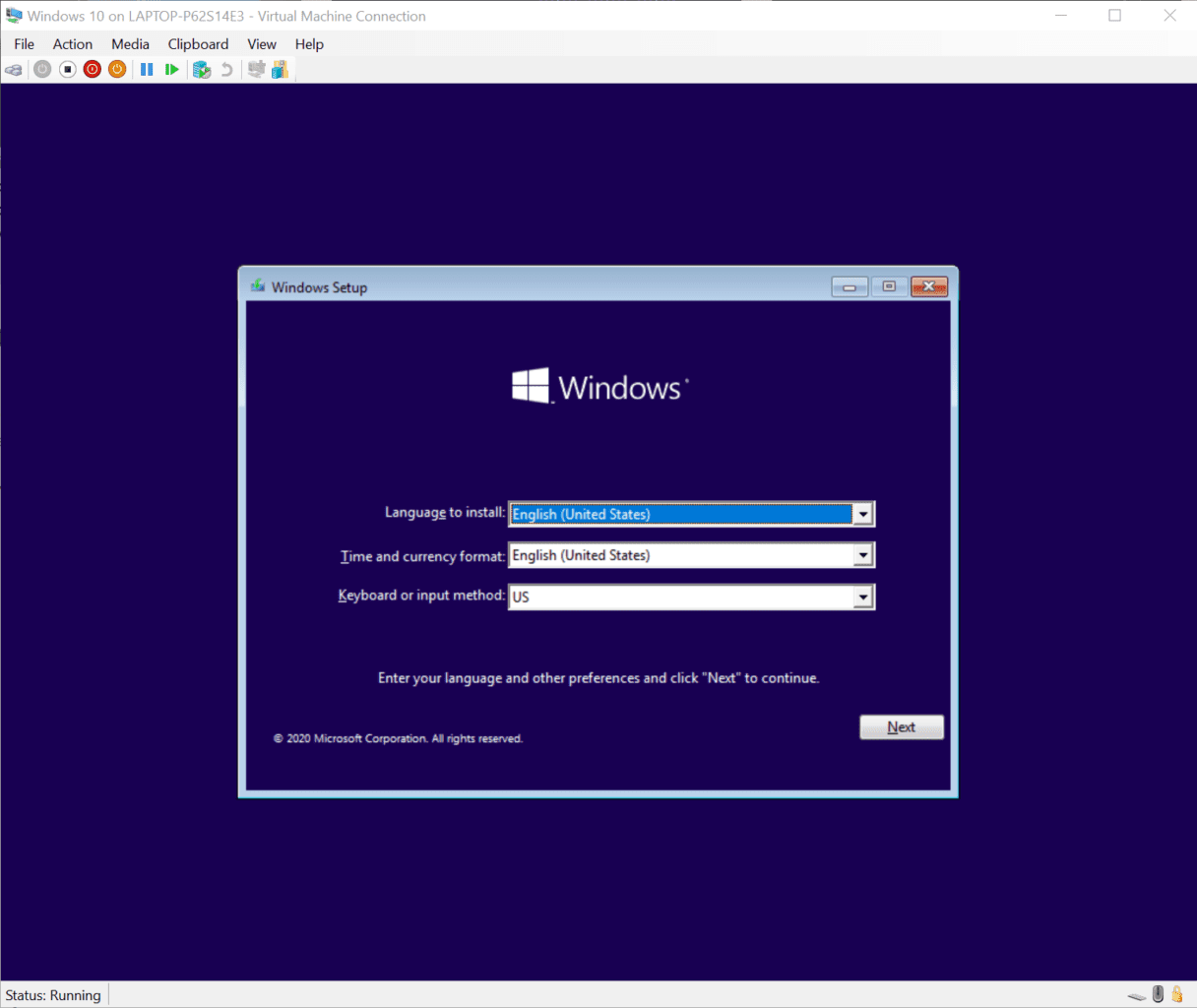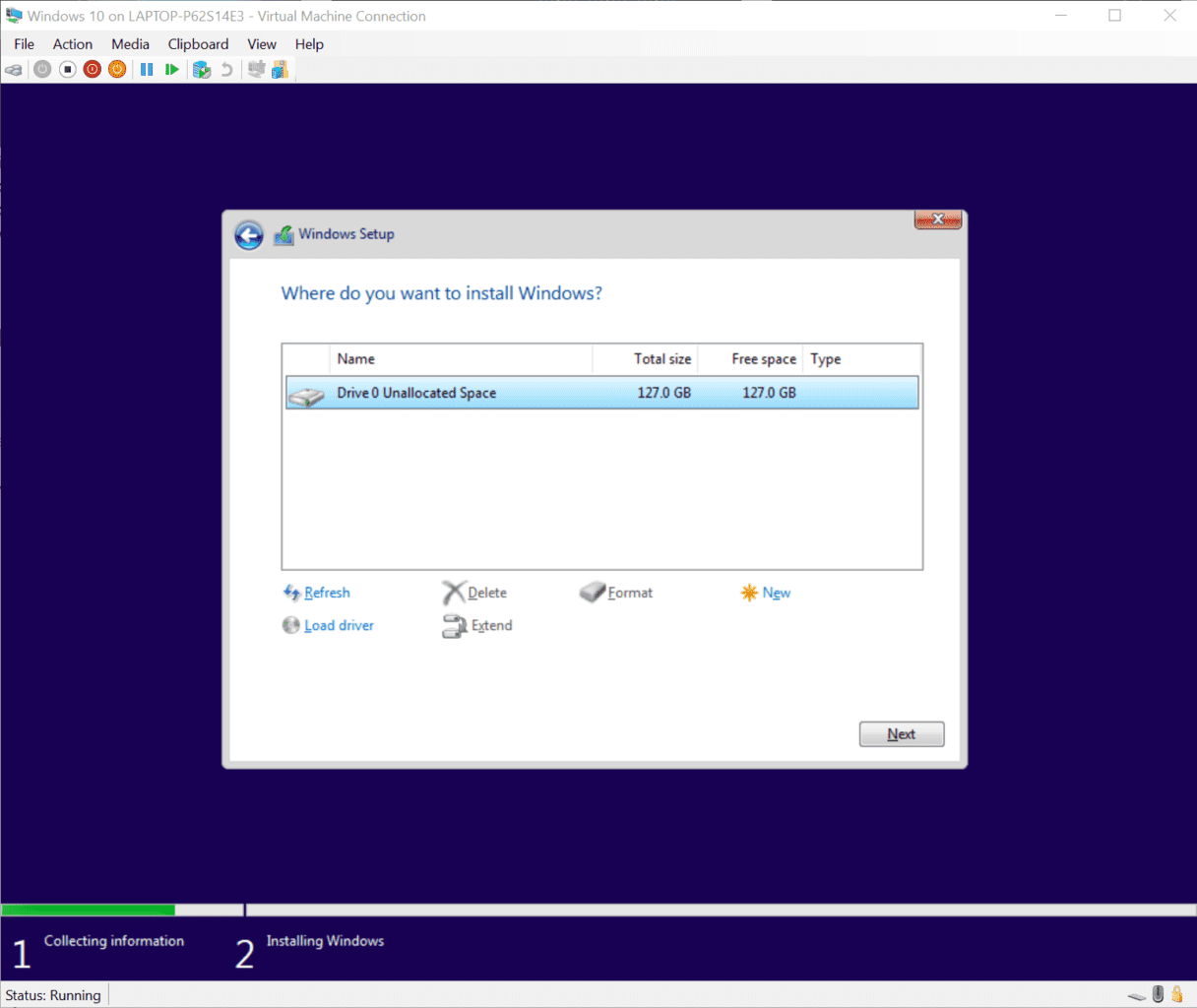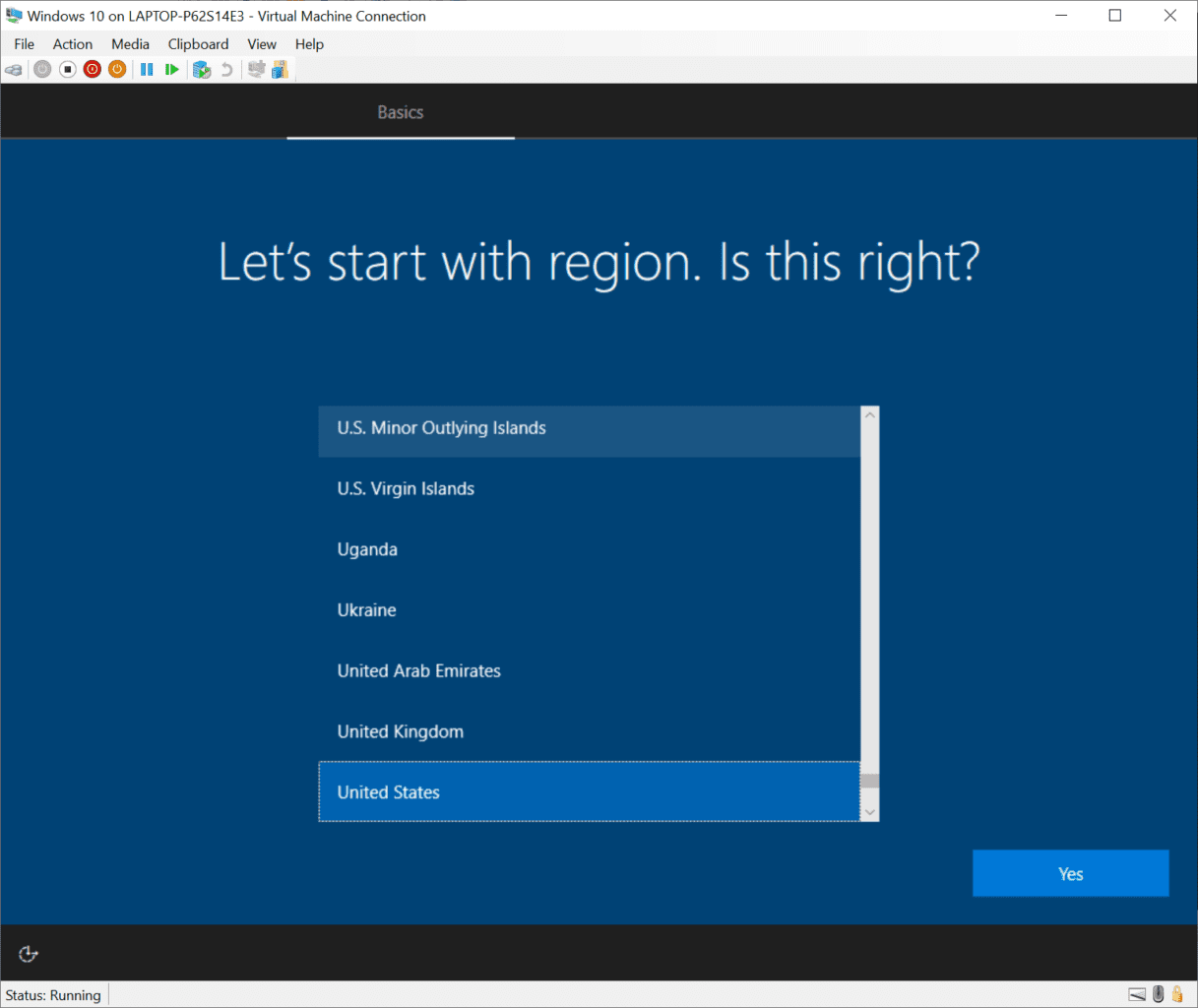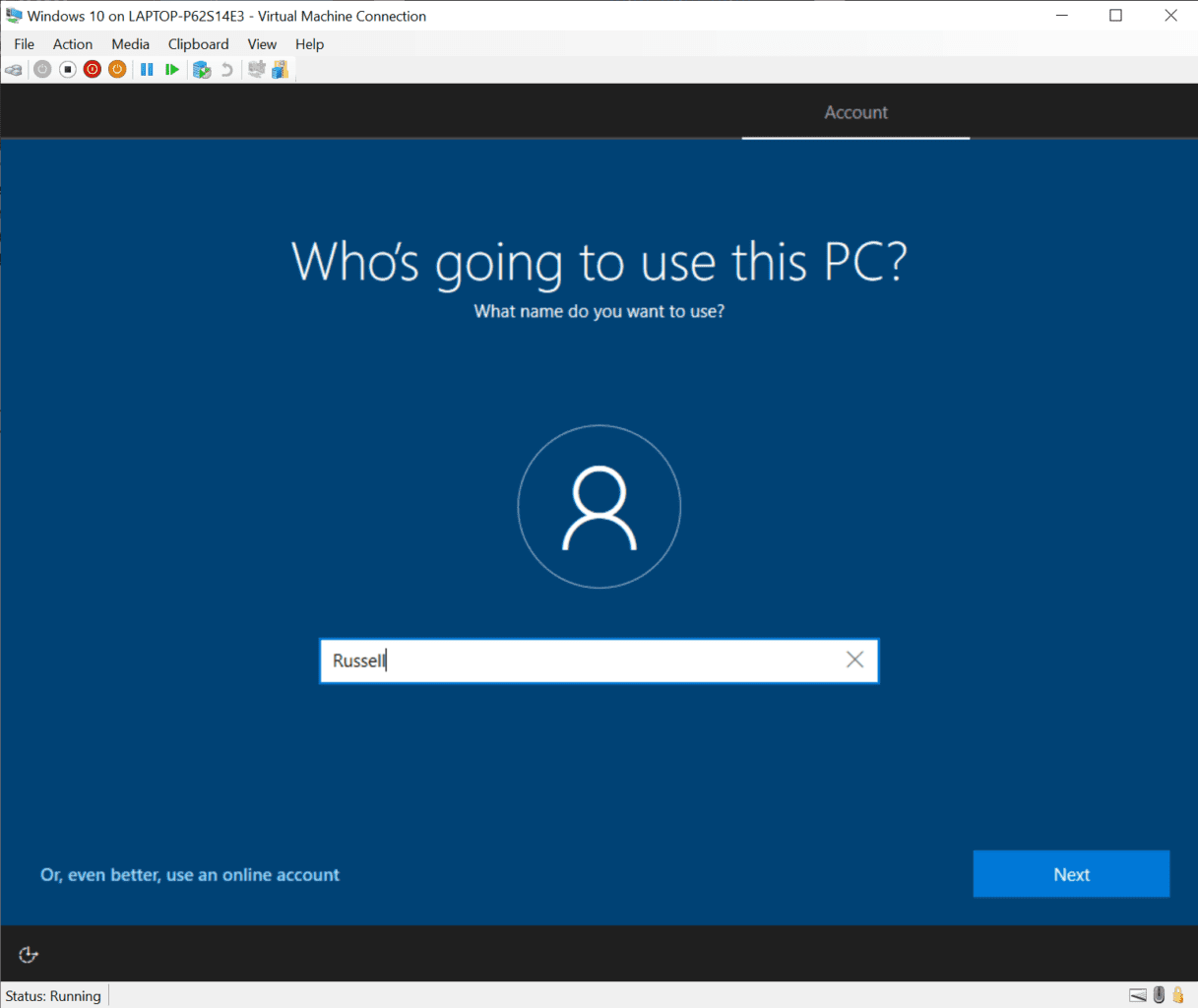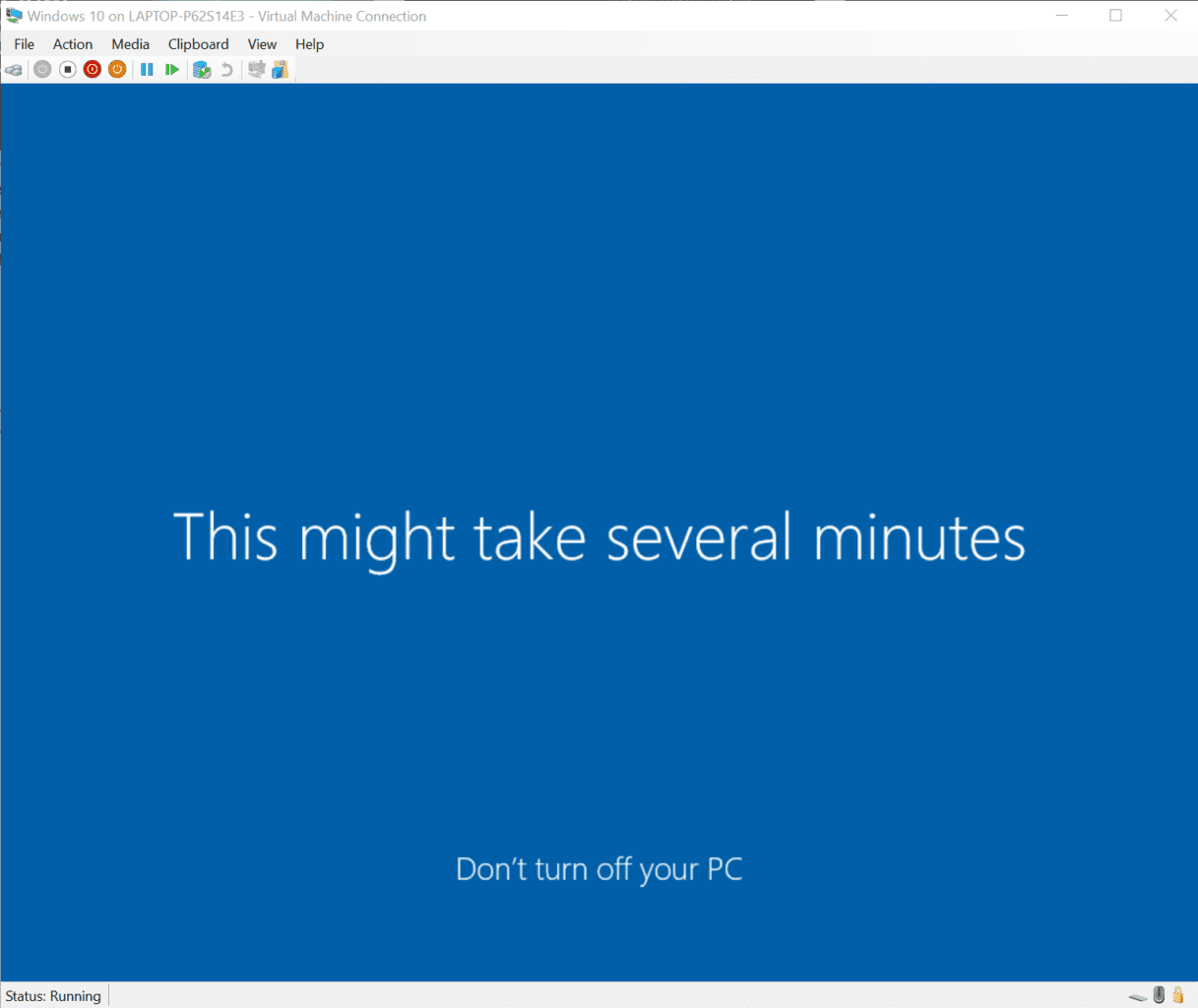Guide: How to Install Windows 10 in a Virtual Machine
Windows 10 includes all the software you need to set up a virtual machine (VM). Using a feature called Hyper-V, a hardware-based hypervisor for virtualization, you can install Windows 10 and other operating systems in VMs running in Windows 10. You can think of it like running a computer inside a computer; where the host is usually a physical device and the guest OS is virtual.
In this article, I’ll show you how to set up Hyper-V and how to install Windows 10 in a Hyper-V VM.
Install Hyper-V in Windows 10
If you want to run virtual machines (VM) on Windows 10, you’ll need to enable Hyper-V. Hyper-V is a hardware-based hypervisor that lets you run VMs in their own isolated spaces. You can run multiple VMs at the same time, provided you have enough resources like disk space, RAM, and CPU capacity. Hyper-V supports Windows, Windows Server, and Linux guest operating systems.
Check your hardware meets the requirements
Most modern Windows 10 and Windows Server devices meet the hardware requirements for Hyper-V. 4GB is the minimum RAM required but depending on the guest operating systems you plan to install in your VMs, you will probably need much more.
- Windows 10 Enterprise, Pro, or Education
- A 64-bit processor with second-level address translation (SLAT)
- VM Monitor Mode extensions
- At least 4 GB of RAM
- Virtualization support enabled in the BIOS or UEFI:
- Hardware-assisted virtualization – Intel VT or AMD-V
- Hardware-enforced Data Execution Prevention (DEP) – XD bit (Intel) or NX bit (AMD)
The easiest way to check if your device supports Hyper-V is using the systeminfo command line tool. Open a command prompt and run the tool.
- Type cmd in the search box in the bottom left of the taskbar and then click Command Prompt in the list of results.
- In the command prompt window, type systeminfo and press ENTER.
- Scroll down the list of results to the very end and you’ll see Hyper-V Requirements. There are four requirements for Hyper-V compatibility and to the right of each you will see ‘Yes’ if your hardware meets them.
- If you see ‘Virtualization Enabled in Firmware: No’ but all the other Hyper-V requirements are set to ‘Yes’, then you’ll need to refer to your device’s instruction manual to enter the BIOS/UEFI and enable hardware virtualization. Entering the BIOS/UEFI usually involves rebooting the device and pressing a designated key, like F2, as the device starts.
- If you see “Hyper-V Requirements: A hypervisor has been detected. Features for Hyper-V will not be displayed.”, then Hyper-V is already installed on your device.
- Shut the command prompt window.
Install the Hyper-V feature on Windows 10
Once you’ve checked your device’s hardware, you are ready to install Hyper-V.
Install Hyper-V using PowerShell
The easiest way is to install Hyper-V is using PowerShell.
- Type powershell in the search box in the bottom left of the taskbar. Make sure Windows PowerShell is highlighted in the list of results on the left and then click Run as Administrator on the right. You may be required to give consent or enter an administrator username and password to continue.
- In the PowerShell window, type the command below and press ENTER.
Enable-WindowsOptionalFeature -Online -FeatureName Microsoft-Hyper-V -All
- Once the installation has completed, you’ll be prompted to reboot Windows. Type y and press ENTER to reboot.
And that is it. Once Windows has rebooted, you will be able to use Hyper-V to run virtual machines on Windows 10.
Download Windows 10 Enterprise Evaluation
Let’s download an evaluation version of Windows 10 that we can install in a VM.
- Download the installation media from Microsoft’s website here. When asked to select your experience, check ISO – Enterprise.
- To complete the process, you’ll need to enter some personal details, like your name and email address.
- Select 64 bit as the platform and choose a language.
- Click Download and save the .iso file to C:\Users\Public\Downloads. Hyper-V Manager cannot access files stored in your own Downloads folder.
Install Windows 10 in a Hyper-V virtual machine
Now that we have Hyper-V installed, the next step is to create a VM and install Windows 10 in the VM. Hyper-V is managed using a console called Hyper-V Manager. Hyper-V Quick Create is a separate app for creating VMs and installing operating system images, or installing your own operating system from provided media, in a few quick steps. By default, both Hyper-V Manager and Hyper-V Quick Create require administrator privileges on your PC.
- Launch Hyper-V Manager. You’ll find it on the Start menu under Windows Administrative Tools. Right click Hyper-V Manager in the list of tools. In the context menu, click More > and then Run as administrator. You’ll be required to give consent or provide an administrator username and password.
Note: In Windows 10 21H2 and newer, Windows Administrative Tools is renamed Windows Tools. It opens in a separate folder. You can still right click on Hyper-V Manager and use Run as administrator in the Windows Tools folder.
- In Hyper-V Manager, right click your PC name in the pane on the left and click Quick Create in the menu.
- In the Create a Virtual Machine dialog, there are two pre-baked Windows 10 images. MSIX Packaging Tool Environment and Windows 10 dev environment. Both these images were created by Microsoft for specific tasks. If you want a general install of Windows 10 in your VM, I recommend ignoring these two options.
- To install Windows 10 using the media we downloaded in the previous steps, click Local installation source in the Create Virtual Machine dialog.
- On the right, click Change installation source. Find the .iso file you saved in C:\Users\Public\Downloads, make sure the file is selected in the Open dialog, and then click Open.
- Click More options in the bottom right of the Create Virtual Machine dialog. In the Name box on the left, type a name for your new VM.
- Now click Create Virtual Machine.
- After a few seconds, you’ll see a message saying that the VM was successfully created. Click Connect to continue.
- The Virtual Machine Connection window will open. Click Start in the middle of the window.
- The VM will boot using the installation media you downloaded in the previous steps. Make sure to press any key on your keyboard when prompted to boot from DVD. If you don’t catch it in time, click Turn Off in the Action Start the VM again by clicking the power button (Start) just below the File and Action menus in Virtual Machine Connection.
- Now you can install Windows 10 in the same way that you would on a physical device. In the Windows Setup dialog, choose a language, time and currency format, and keyboard and input method. Once you’re done, click Next.
- Then click Install now.
- Check I accept the license terms and click Next.
- Click Custom: Install Windows only (advanced).
- Click Next again to install Windows in the default VM drive.
Windows will now copy the installation files from the installation media to the VM disk and expand them. This process can take a few minutes depending on the speed of your host PC.
- Once Windows 10 has installed, you need to provide some basic customization through the Out-of-Box Experience (OOBE) phase of setup. Like choosing your language and keyboard layout etc. Choose a language and then click Yes.
- Make sure that the correct keyboard layout is selected and click Yes.
- Click Skip on the Want to add a second keyboard layout?
- On the Sign in with Microsoft screen, click Domain join instead at the bottom of the screen.
- On the Who’s going to use this PC? screen, type a username in the Name box and click Next.
- Create a password for the new account and click Next.
- Confirm the password and click Next
- In the Security question dropdown menu, select a question. Type the answer in the Your answer box and click Next.
- Repeat the above step two more times.
- Click Accept on the Choose privacy settings for your device screen to accept the default settings.
- On the Let Cortana help you get things done screen click Not now.
Windows will now prepare your desktop. This might take a few minutes.
And that’s it! Once your desktop is ready, you’ll be prompted to connect again. This establishes an ‘enhanced’ connection using the Remote Desktop Protocol (RDP) and it enables, among other things, features like copy and paste of text between your host OS and guest VM.









